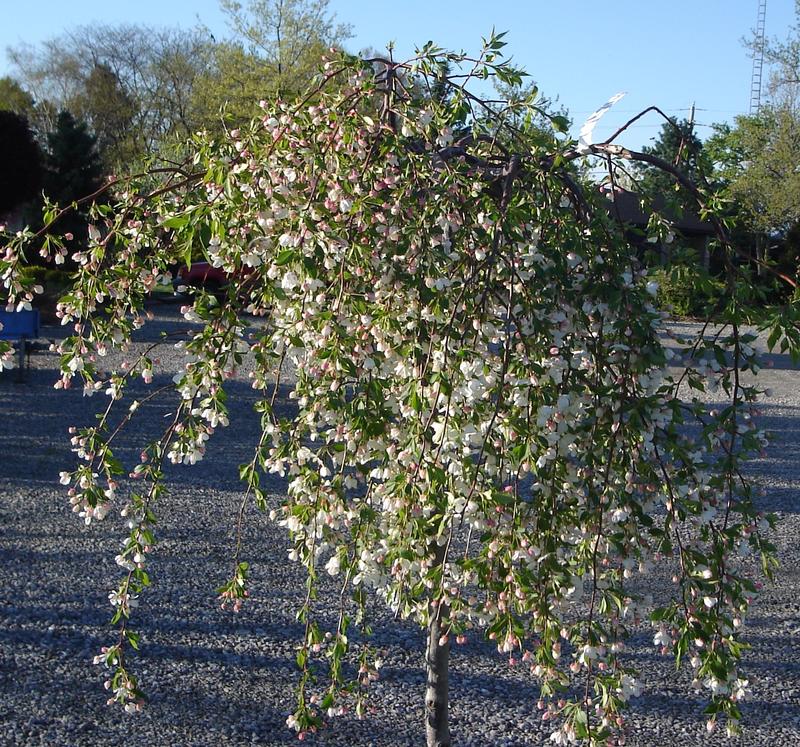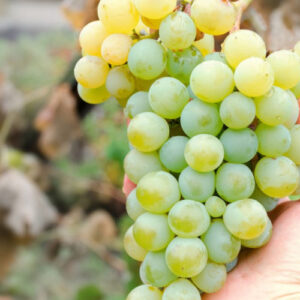The April Showers Crabapple (Malus mill ‘Uebo’) has a distinctive, elegant structure that no other Crabapple tree has! Its waving, droopy branches mimic rain showers and create a picturesque ornamental beauty lasting all year long! Wintery white flowers bloom in the spring, setting the mood for your entire landscape! As the tree’s blossoms fade, dark green foliage emerges to add depth to the landscape around it and accent the weeping branches. The show is not complete yet, because fall brings crimson-red fruits that dangle like ornaments from its branches which attract songbirds looking for a feast before winter! In the winter, April Showers brings an elegant silhouette to the landscape! This captivating scene will have you daydreaming about this Crabapple tree all day long! Within the large Malus genus, which also includes the species grown for large table apples, there are more than 30 species that feature smaller tart fruits and magnificent flowers. These are the flowering crabapples, of which there are many dozens of named cultivars. Many of these are grafted types, produced by joining the branch cuttings of more ornamental species onto rootstocks of hardier Malus species. These small to medium-sized trees are extremely popular for their fragrant, delicate spring blossoms. Crabapple trees are normally planted from potted nursery specimens in the fall. They have a moderate growth rate of 12 to 24 inches per year, and a 5-gallon potted tree may take three to five years or even longer before it flowers heavily. Like all apples, crabapples have seeds with trace amounts of amygdalin, a substance that breaks down into cyanide. However, large numbers of seeds must be chewed and swallowed to have a serious impact. Since crabapples are generally sour and unpalatable to humans, there is little chance that many seeds will be digested.
Edible Gardening, Fruit Trees, Fruit Trees & Nuts, Fruit Trees & Nuts, Nursery




Reviews
There are no reviews yet.